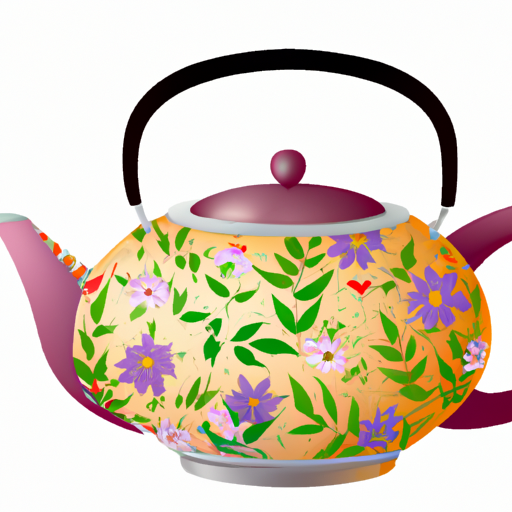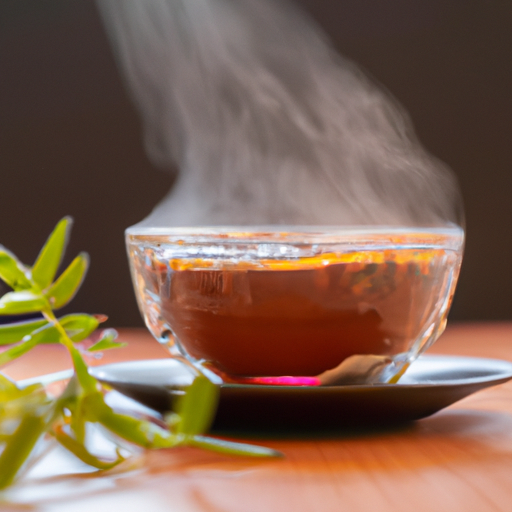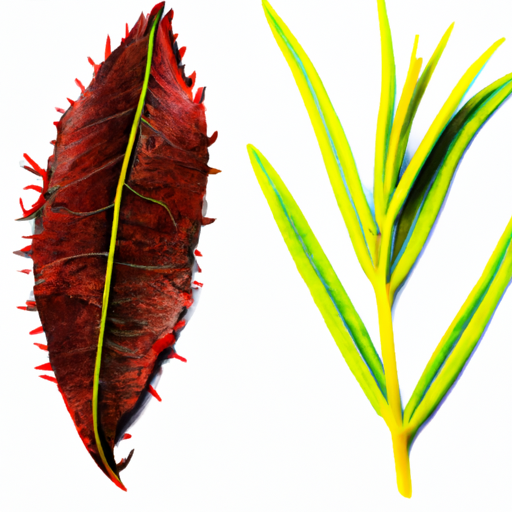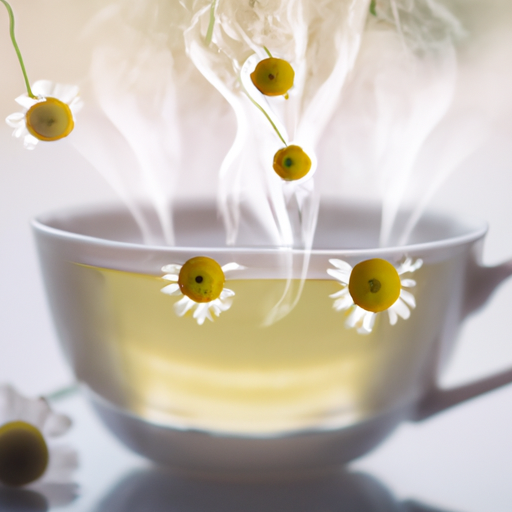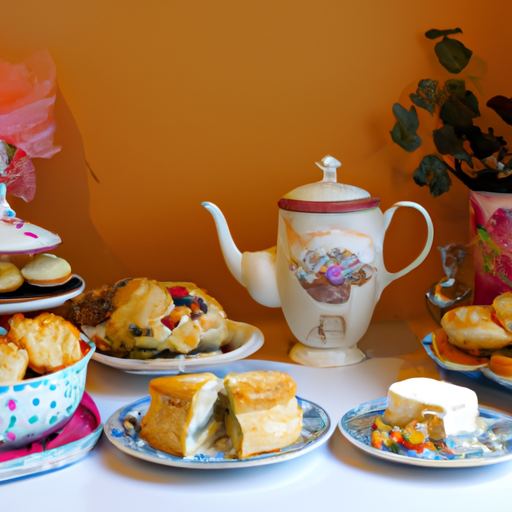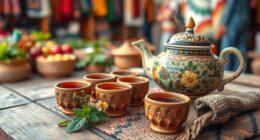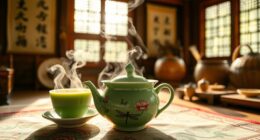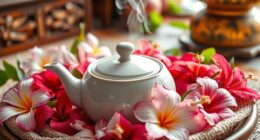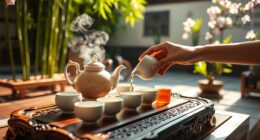When it comes to savoring a delicious cup of loose leaf tea, having the appropriate teapot is crucial. Similar to a conductor guiding an orchestra, a finely crafted teapot can enhance the delicate flavors and scents of the tea leaves, resulting in a harmonious blend of taste that delights the senses.
With a myriad of teapot options available, it can be overwhelming to find the one that truly enhances your tea experience. Fear not, for I have delved into the world of teapots with a fervent passion, seeking the crème de la crème for loose leaf tea enthusiasts.
In this article, I will guide you through the types of teapot materials, the key features to consider, and unveil my top recommendations. So, grab your favorite tea leaves and prepare to embark on a journey of tea-infused bliss with the best teapots for loose leaf tea.
Key Takeaways
- Teapots made of glass, ceramic, and porcelain are preferred for loose leaf tea as they do not alter the taste of the tea.
- Teapots with removable infuser baskets or built-in strainers are ideal for preventing oversteeping and bitterness.
- Teapots that retain heat well are recommended for keeping tea warm for longer periods of time.
- Dishwasher-safe teapots are convenient for easy cleaning.
Types of Teapot Materials
I prefer teapots made of glass, ceramic, or porcelain for brewing loose leaf tea because they don’t alter the taste of the tea and are easy to clean. When it comes to teapot materials, each has its benefits.
Glass teapots are great because they’re transparent, allowing you to see the tea as it brews. Ceramic teapots, on the other hand, offer excellent heat retention and come in various styles and designs. Porcelain teapots are known for their elegance and durability.
All three materials don’t impart any unwanted flavors to the tea, ensuring a pure and authentic taste. Additionally, they’re dishwasher-safe, making cleaning a breeze.
So, whether you prefer the transparency of glass, the heat retention of ceramic, or the elegance of porcelain, these teapot materials are sure to enhance your loose leaf tea experience.
Key Features to Consider
Consider key features when choosing a teapot for brewing loose leaf tea. Here are three important factors to keep in mind:
-
Cleaning tips: Look for teapots that are dishwasher-safe for easy cleaning. This saves you time and effort, allowing you to enjoy your tea without the hassle of scrubbing. Additionally, teapots with removable infuser baskets make it easier to clean out any leftover tea leaves.
-
Importance of heat retention: Opt for teapots that are known for their ability to retain heat. This ensures that your tea stays warm for longer periods of time, allowing you to savor each cup. Teapots with tight-fitting lids and well-insulated materials, such as glass, ceramic, or porcelain, are ideal for this purpose.
-
Size and capacity: Consider the amount of tea you usually make at once when choosing the size of your teapot. Larger teapots may take longer to heat up and require more loose leaf tea, while smaller ones are suitable for individual servings. Choose a size that suits your brewing needs and preferences.
Recommended Teapots
When choosing a teapot for brewing loose leaf tea, it’s important to look for recommendations from tea enthusiasts who’ve experienced different teapots. One key consideration is the size of the teapot. If you typically make a large amount of tea at once, a teapot with a larger capacity would be ideal.
On the other hand, if you prefer to brew tea in smaller quantities or if you frequently travel, a smaller teapot or a teapot designed for travel would be more suitable. Teapots for travel often come with a built-in infuser or a removable infuser basket, allowing you to brew tea on the go. These teapots are usually compact and lightweight, making them easy to carry around.
So, whether you enjoy a cozy cup of tea at home or love exploring new places with your favorite loose leaf tea, there’s a teapot out there that’ll meet your needs.
Frequently Asked Questions
Can I use a teapot made of plastic or aluminum for loose leaf tea?
Plastic or aluminum teapots? Definitely not! They’re like flavor thieves, sneaking in and altering the taste of your precious loose leaf tea. Stick with teapots made of glass, ceramic, or porcelain for the purest, most delicious experience.
How do I clean the infuser basket of the HIWARE Glass Teapot?
To clean the infuser basket of the HIWARE Glass Teapot, I recommend using a mixture of warm water and mild dish soap. Gently scrub the basket with a soft brush or sponge, ensuring to remove any residue. Rinse thoroughly and let it air dry.
Can I use the ZENS Modern White Ceramic Teapot on a stove top?
No, the ZENS Modern White Ceramic Teapot is not safe for use on a stove top. It is designed for brewing and serving tea, but not for direct heat. It is dishwasher safe for easy cleaning.
How do I prevent the Sotya Cast Iron Teapot from rusting?
To prevent rust in the Sotya cast iron teapot, it is important to properly care for it. After each use, thoroughly dry the teapot to remove any moisture, and store it in a dry place. Regularly season the teapot with a thin layer of oil to create a protective barrier against rust. Avoid using harsh detergents or scrubbing the teapot too vigorously, as this can damage the enamel coating. With proper care, your Sotya cast iron teapot will stay rust-free and last for years to come.
Does the Tealyra Large Ceramic Teapot retain heat well?
Yes, the Tealyra Large Ceramic Teapot retains heat well due to its ceramic material, which is known for its excellent heat retention properties. Ceramic is a great alternative material for teapots that want to keep their tea warm for longer periods of time.

